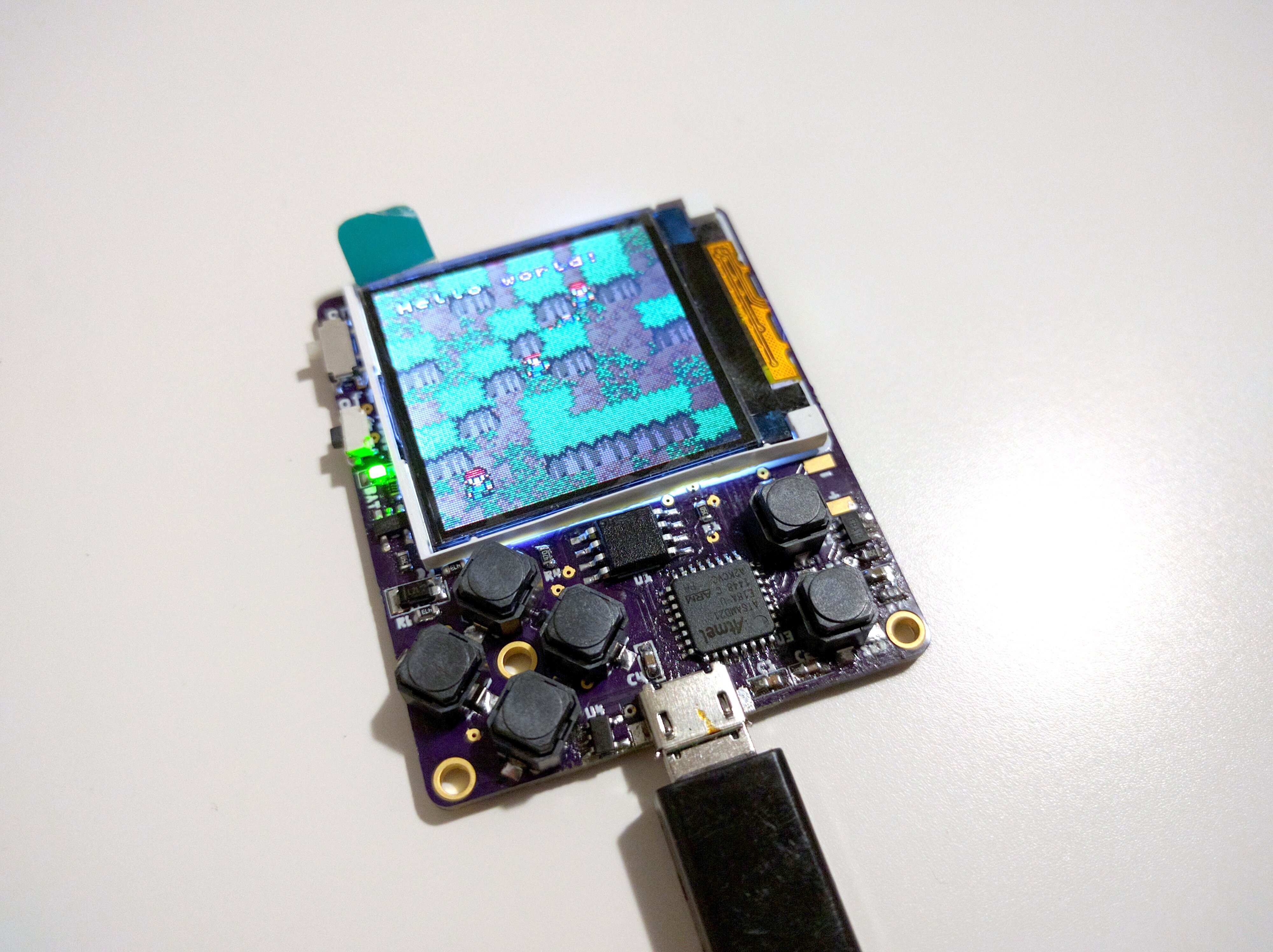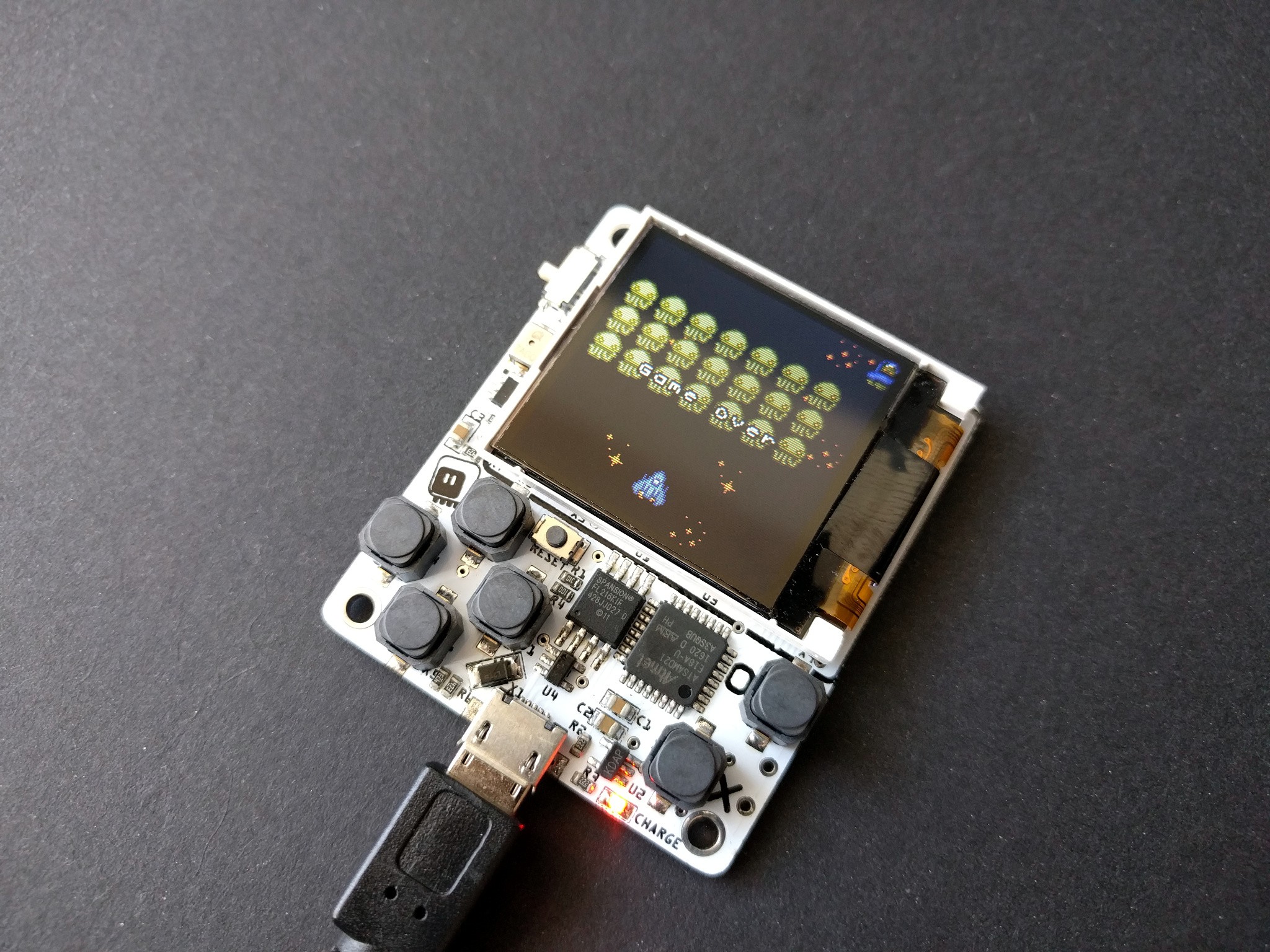Hello, I'm the initial author of this small device — I created an account to answer the questions asked here.
First of all, the photo of the back, without and with the battery installed: (Sorry, I tried to post a photo here, but the forum tells me it's spam, you can see the photo of the back on the hackaday page of the project.)
As you can see, you have the programming/debugging interface there, the connectors for the battery (the board has lipo charging circuitry on it), and four unused GPIO pins broken out. You can also see a lot of vias in there, and indeed, I had a lot of problems with the early prototypes, where touching, or even putting your finger close to the audio circuit would result in buzzing, and touching the display lines would result in graphics glitches. That is why the final version has the audio circuit moved next to the display, out of the reach of fingers, and the video signals all routed on the top side of the PCB — the vias you see are the buttons and power lines. Of course, you would still get a short circuit if you placed it on a metal surface.
With the battery attached (I recommend a BL-5B Nokia battery, but pretty much any phone battery of the right size will work) you have pretty much the whole back covered, so there is no longer that problem.
There is also a simple case designed by one of the users to be 3D-printed, that solves this problem permanently.
You are right that this is not yet a product designed to carry in your pocket. I sell it as a kit, where you have to add the battery and attach the display yourself (no soldering required), mainly because it's my hobby project, and I don't have the resources to do all the certifications for a proper product, or make the molds for a proper case. The whole point of the console is that it is programmable easily with Python (it comes up as a USB drive when you connect it, and you just edit the files on it), and I am targeting people interested in learning to make simple games, rather than playing classics on an emulator, etc. Frankly speaking, the hardware is not really that interesting — it's pretty much equivalent to Gamebuino, with a SAMD21 MCU and ST7735R display. You could probably even port Gamebuino games to it, if you wanted, but that's not the point — the point was to make it super-easy to start making games with Python, without having to install anything on your computer, and with being able to take it with you and show your friends.
This is a very early time in the life of the project, and I'm still working on the software: we have two simple game examples to prove that the idea is viable (a platformer and a space shooter), and a getting started tutorial showing a how to write a bouncing balls demo. A lot more work is required to make this fly, and that is slowly being done by people interested in it — Matej is working on a better case, I'm still optimizing the CircuitPython firmware and working on more games, there are people experimenting with programming this with Arduino and MicroBlocks too. Generally speaking, it's an exciting time, but nothing can be said yet where the project will go from here.
Finally, while I certainly appreciate the offer of re-selling it, I'm not sure the project is ready for that. I'm selling it on Tindie, and I'm shipping it from Switzerland — so pretty close to Germany anyways — and I prefer to deal with all the people who buy it directly, so that I can help them with any problems, and improve the documentation and software in the process. I only have about 150 of them, with about half of them sold already, and I would prefer that most of them go to people who are genuinely interested in writing games, rather then people looking for yet another toy.
Perhaps if the idea really catches and there is interest, I will make some kind of crowd-funding campaign for it, get the money for the certifications and cases and what not, and turn it into a proper product that can be used as a toy, but for now it's more of a developer kit, sorry about that.






